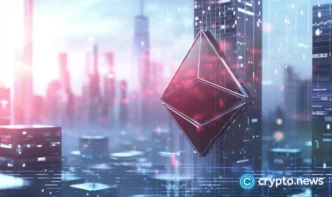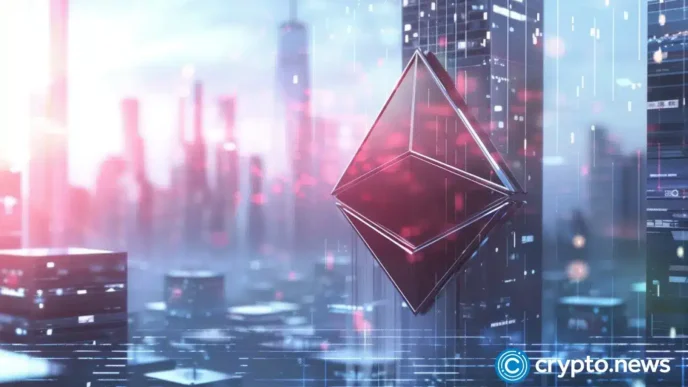[ad_1]
Disclosure: The views and opinions expressed here belong solely to the author and do not represent the views and opinions of crypto.news’ editorial.
DeFi promised a financial revolution—a world where users could build custom strategies by seamlessly stacking protocols like “money legos.” However, the reality has been disappointing: only 10% of crypto holders are active monthly users, meaning that less than 1% of the global population regularly interacts with DeFi. Meanwhile, the amount of layer-2 chains on major networks like Ethereum has only increased. The result? Complexity and fragmentation make it difficult—if not impossible—for most people to engage.
The answer is composability: The ability to combine various DeFi protocols and tools into a cohesive, functional strategy. It’s the key to making DeFi protocols work together seamlessly, turning the space from a technical maze into an open financial system accessible to all. Like Shopify transformed e-commerce, true composability will allow users to build, adapt, and optimize financial strategies in minutes, with no technical expertise required. It’s the missing piece that can finally make DeFi practical for everyone.
The dream of ‘money legos’ vs DeFi’s reality
This idea of composability fueled the early excitement around DeFi. The concept of “money legos” promised users the ability to “stack” protocols like building blocks, creating custom financial solutions with ease. In theory, composability would give everyday users a transparent, modular system where strategies could be pieced together as intuitively as snapping legos together.
It’s a powerful vision: DeFi as a seamless, lego-like experience where users can effortlessly stack protocols to build personalized financial solutions—no barriers, no friction. But today, most DeFi users encounter a fragmented web of isolated protocols and clunky interfaces. Each tool feels disconnected, requiring users to jump between platforms, re-enter data, and manually stitch strategies together.
This is far from intuitive. DeFi’s current user experience is often frustrating and exclusive, accessible only to those with advanced technical skills. And DeFi is only growing more complex: recent conversations around L2 solutions on chains like Ethereum support scalability; they’ve also introduced new layers of complexity, creating silos that prevent interoperability.
This only highlights the critical importance of composability; without it, the entire DeFi ecosystem risks becoming further fragmented, with isolated protocols that complicate rather than enhance the user experience. Yet, with solutions now emerging to unify these protocols, the accessible, user-friendly DeFi ecosystem we envisioned may finally be within reach.
Drag-and-drop composability: A game-changer for DeFi
Imagine building a DeFi strategy as easily as dragging and dropping elements into place. This kind of intuitive composability would finally bring DeFi’s “money legos” vision to life, transforming it from a niche, expert-only playground into a truly accessible financial ecosystem. In a fully composable DeFi environment, users could layer protocols to create dynamic, customizable financial solutions. DeFi would shift from a fragmented, exclusive system to an open, adaptable platform where anyone can innovate freely.
Consider the possibilities: a user could combine lending and yield farming protocols to maximize returns or layer insurance with liquidity protocols to manage risk—all with a few clicks. If markets shift, they could adjust strategies instantly or swap out protocols without unravelling the entire setup. With composability, users could craft solutions as unique as their financial goals, adapting seamlessly to change and experimenting with new configurations in real time.
Drag-and-drop composability would finally unlock DeFi’s full potential for everyone—from first-time crypto users to seasoned investors. The days of juggling disconnected platforms and decoding technical jargon would be over. True composability would democratize financial experimentation, turning DeFi into a system that is as empowering as it is accessible. When users can shape their financial strategies with this kind of flexibility and ease, DeFi won’t just meet its promises—it could revolutionize how we think about personal finance altogether.
Making DeFi viable for institutions
But composability isn’t just for individuals; it’s also the key to unlocking institutional participation in DeFi. Today, institutions are wary of entering DeFi due to high barriers like fragmented protocols and complex, manual portfolio management. For institutions to confidently deploy large-scale investments, they need a system that is predictable, scalable, and seamlessly integrated—qualities only a composable DeFi ecosystem can deliver.
Composability allows institutions to combine protocols into streamlined, efficient strategies, removing the friction and operational complexity that currently hinder them. Imagine an institution being able to assemble a diversified DeFi portfolio with the same ease and customization that individuals have—stacking lending, liquidity, and risk management protocols into a coherent strategy without a tangled web of manual steps. This composable structure would provide the flexibility and predictability institutions require, making DeFi as viable for them as any traditional financial platform.
The impact of institutional engagement would be transformative. With composability, DeFi could finally bridge the gap between innovative potential and real-world scalability, inviting new capital flows and accelerating the sector’s growth. This shift isn’t merely a feature upgrade; it’s the foundation for DeFi’s maturation, positioning it as a serious alternative to traditional finance on a global scale.
Composability will decide DeFi’s future
DeFi stands at a critical crossroads. Without composability, it risks remaining fragmented and inaccessible—a complex maze navigable only by a select few. But with composability as its foundation, DeFi can transcend its niche, evolving into a transformative system that empowers users to innovate, customize, and take control of their financial futures. The long-promised vision of “money legos” is finally within reach—if composability becomes the industry standard.
Composability isn’t just a feature; it’s the cornerstone of DeFi’s future. It will define whether DeFi becomes a universally accessible toolkit for financial innovation or remains a fringe corner of finance. For DeFi to achieve its full potential and deliver on its promise, composability must lead the way, making financial empowerment accessible to all, as it was always meant to be.
[ad_2]















